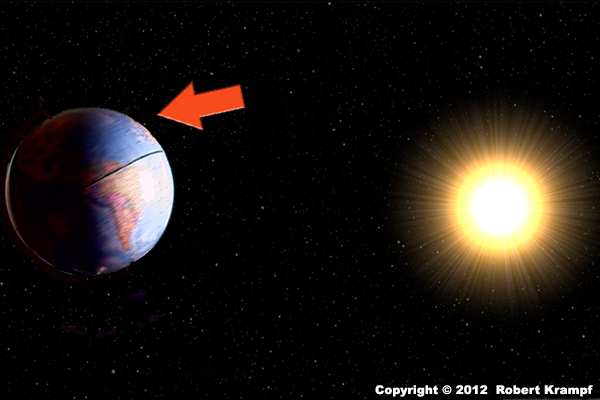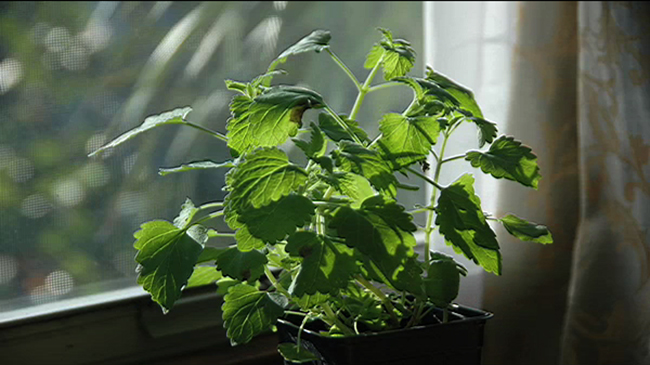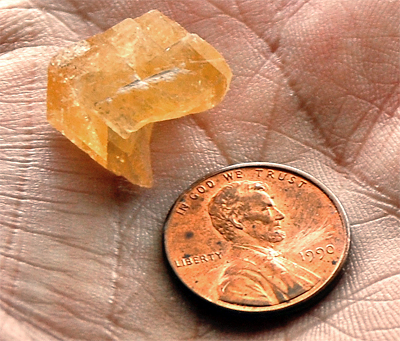Here are some science questions to help you test your general science knowledge. They will also show you which of the Florida, Utah, and NGSS science standards each question is testing.
The questions are chosen randomly, so this quest will be different each time.
Get 5 more random questions.
Would you rather see the most recently added questions?

Notice that the very back point on this Mule Deer's antlers is split. This is a genetic trait which is becoming more and more common because hunters would rather shoot deer with perfect antlers. This is an example of:
-
why hunting deer is a bad idea.
No. Actually, deer hunting is very important. Because we have killed off many of their natural predators, if hunters did not control their population, large numbers of them would starve to death. -
an adaptation that improves an organism's chance for survival.
Yes. Because hunters are less likely to shoot it, this deer is more likely to survive long enough to reproduce, passing this trait on to its offspring. -
an acquired trait.
No. This is a genetic trait, not an acquired trait. -
why antlers are more useful than horns.
No. Antlers and horns serve different functions, but both are useful to the animal that has them.
Click to see which state standards this question tests, and which of my videos, experiments, and other resources support that topic.
Florida
SC.5.L.15.1 Describe how, when the environment changes, differences between individuals allow some plants and animals to survive and reproduce while others die or move to new locations.
| Who Evolved on First? | text page, free, checked |
| Review Adaptation-1 | practice |
| Review Adaptation-5 | practice |
| Review Adaptation-6 | practice |
SC.7.L.15.2 Explore the scientific theory of evolution by recognizing and explaining ways in which genetic variation and environmental factors contribute to evolution by natural selection and diversity of organisms.
| Who Evolved on First? | text page, free, checked |
| Review Adaptation-1 | practice |
Utah
UT.5.V.2.c Describe how a particular physical attribute may provide an advantage for survival in one environment but not in another (e.g., heavy fur in arctic climates keep animals warm whereas in hot desert climates it would cause overheating; flippers on such animals as sea lions and seals provide excellent swimming structures in the water but become clumsy and awkward on land; cacti retain the right amount of water in arid regions but would develop root rot in a more temperate region; fish gills have the ability to absorb oxygen in water but not on land).
| Review Adaptation-1 | practice |
| Review Adaptation-5 | practice |
| Review Adaptation-6 | practice |
UT.7.IV.2.a Predict why certain traits (e.g., structure of teeth, body structure, coloration) are more likely to offer an advantage for survival of an organism.
| Selective Smelling | video, checked |
| Onion Crystals | video |
| Who Evolved on First? | text page, free, checked |
| Thoughts on an Exoskeleton | text page, free |
| Review Adaptation-1 | practice |
| Review Adaptation-2 | practice |
| Review Adaptation-5 | practice |
| Review Adaptation-6 | practice |
NGSS
3-LS4-2 Use evidence to construct an explanation for how the variations in characteristics among individuals of the same species may provide advantages in surviving, finding mates, and reproducing.
| Flowers | video, ClosedCaptions |
| Who Evolved on First? | text page, free, checked |
| Review Adaptation-1 | practice |
| Review Adaptation-3 | practice |
| Review Adaptation-4 | practice |
| Review Adaptation-5 | practice |
| Review Adaptation-6 | practice |

What season is the area that the arrow points to having?
-
Winter
Yes! Even though that area is in daylight, the Earth's axis in that hemisphere is pointing away from the Sun. It gets less direct light, and has shorter days. -
Spring
No. For spring, the Earth's axis for that hemisphere would be in between pointing towards the Sun and away from the Sun. -
Summer
No. Although it is daytime in that area, the Earth's axis in that hemisphere is pointing away from the Sun. It gets less direct light, and has shorter days. -
Autumn
No. For autumn, the Earth's axis for that hemisphere would be in between pointing towards the Sun and away from the Sun.
Click to see which state standards this question tests, and which of my videos, experiments, and other resources support that topic.
Florida
SC.4.E.5.1 Observe that the patterns of stars in the sky stay the same although they appear to shift across the sky nightly, and different stars can be seen in different seasons.
| Global Science | video, ClosedCaptions |
| Review Space-5 | practice |
| Review Space-8 | practice |
| Review Space-12 | practice |
Utah
UT.6.II.2.e Use a model to explain why the seasons are reversed in the Northern and Southern Hemispheres.
| Global Science | video, ClosedCaptions |
| Review Space-5 | practice |
| Review Space-8 | practice |
| Review Space-12 | practice |
NGSS
3-ESS2-1 Represent data in tables and graphical displays to describe typical weather conditions expected during a particular season.
| Nephoscope | video, checked |
| Pine Cone Weather | text page, free |
| Review Weather-5 | practice |
| Review Weather-6 | practice |
| Review Weather-4 | practice |
| Review Weather-3 | practice |
| Review Space-5 | practice |
| Review Space-8 | practice |
5-ESS1-2 Represent data in graphical displays to reveal patterns of daily changes in length and direction of shadows, day and night, and the seasonal appearance of some stars in the night sky.
| Global Science | video, ClosedCaptions |
| Finding Your Way | video, checked |
| Review Space-5 | practice |
| Review Space-8 | practice |
| Review Space-12 | practice |

What is the difference between speed and velocity?
-
Speed is faster.
No. An object's speed is part of its velocity. -
Velocity has to be in a specific direction.
Yes! An object's speed is measured in distance per time, such as 20 miles per hour. Its velocity must include a direction, such as north at 20 miles per hour. -
They mean the same thing.
No. The two terms have different meanings. -
Speed is a general term and velocity is a scientific term.
No. Both terms are used in science, and they mean different things.
Click to see which state standards this question tests, and which of my videos, experiments, and other resources support that topic.
Florida
SC.4.P.12.1 Recognize that an object in motion always changes its position and may change its direction.
| Review Force and Motion-3 | practice |
Utah
UT.3.III.2.e Show how these concepts apply to various activities (e.g., batting a ball, kicking a ball, hitting a golf ball with a golf club) in terms of force, motion, speed, direction, and distance (e.g. slow, fast, hit hard, hit soft).
| Challenge: Paper, Coin, Cup, part 1 | video |
| Versorium | video, checked |
| Obedient Coin | video, checked |
| Challenge: Paper, Coin, Cup, part 2 | video |
| Review Force and Motion-3 | practice |
NGSS
MS-PS3-1 Construct and interpret graphical displays of data to describe the relationships of kinetic energy to the mass of an object and to the speed of an object.
| Measuring Kinetic and Potential Energy | video, checked |
| The Rollback Can | video, free, Updated |
| High Bounce | video, checked |
| Review Force and Motion-3 | practice |

I placed this plant near the window. After two hours, I examined it. What would you expect to happen to the leaves during that time?
-
The leaves will turn towards the light.
Yes. The leaves will move and turn so that their surface gets as much light as possible. The following is a time lapse video, showing what happened with the plant. -
The leaves will turn away from the light.
No. The leaves need light, so they turn to catch as much light as possible. -
The leaves will turn a darker green.
No. While more light could eventually cause the leaves to grow and darken, the process would not happen in a couple of hours. -
The leaves will not change.
No. Plants are adapted to turn their leaves towards a light source.
Click to see which state standards this question tests, and which of my videos, experiments, and other resources support that topic.
Florida
SC.3.L.14.2 Investigate and describe how plants respond to stimuli (heat, light, gravity), such as the way plant stems grow toward light and their roots grow downward in response to gravity.
| Review Plants-1 | practice |
SC.5.L.17.1 Compare and contrast adaptations displayed by animals and plants that enable them to survive in different environments such as life cycles variations, animal behaviors and physical characteristics.
| Onion Crystals | video |
| A Walk in the Park | video, checked |
| Nature Watching | video, checked |
| Calling a Woodpecker | video, checked |
| Selective Smelling | video, checked |
| Seed Search | video, ClosedCaptions, checked |
| Flowers | video, ClosedCaptions |
| Review Adaptation-5 | practice |
| Review Adaptation-6 | practice |
| Review Plants-1 | practice |
| Review Adaptation-2 | practice |
| Review Adaptation-3 | practice |
| Review Adaptation-4 | practice |
Utah
UT.8.IV.4.d Investigate and report the response of various organisms to changes in energy (e.g., plant response to light, human response to motion, sound, light, insects’ response to changes in light intensity).
| Making a Screamer | video, free, Updated |
| Review Plants-1 | practice |
UT.3.II.2.b Predict the effects of changes in the environment (e.g., temperature, light, moisture) on a living organism.
| Color Changing Flowers | video, checked |
| Weather and Climate | video |
| Review Plants-1 | practice |
UT.3.V.1.b Observe and report how sunlight affects plant growth.
| Measuring Photosynthesis | video, checked |
| Testing a Leaf for Starch | video, ClosedCaptions |
| Review Plants-1 | practice |
NGSS
2-LS2-1 Plan and conduct an investigation to determine if plants need sunlight and water to grow.
| Measuring Photosynthesis | video, checked |
| Testing a Leaf for Starch | video, ClosedCaptions |
| Review Plants-1 | practice |
3-LS3-1 Analyze and interpret data to provide evidence that plants and animals have traits inherited from parents and that variation of these traits exists in a group of similar organisms.
| Who Evolved on First? | text page, free, checked |
| Review Cells-4 | practice |
K-ESS2-2 Construct an argument supported by evidence for how plants and animals (including humans) can change the environment to meet their needs.
| Seed Search | video, ClosedCaptions, checked |
| Review Plants-1 | practice |
4-LS1-1 Construct an argument that plants and animals have internal and external structures that function to support survival, growth, behavior, and reproduction.
| Seed Search | video, ClosedCaptions, checked |
| Orange Slices | video, ClosedCaptions |
| Bird Bones | video, free |
| Feathers | video, checked |
| Heartless Plants | video, ClosedCaptions, checked |
| Nature Watching | video, checked |
| Calling a Woodpecker | video, checked |
| Pumpkin Guts | video, free, ClosedCaptions, checked |
| Thoughts on an Exoskeleton | text page, free |
| Eye Shine | text page |
| How Does a Butterfly Fly? | text page, free |
| Review Plants-3 | practice |
| Review Plants-1 | practice |
| Review Plants-5 | practice |
| Review Plants-6 | practice |
| Review Plants-7 | practice |
| Review Plants-8 | practice |
MS-LS1-5 Construct a scientific explanation based on evidence for how environmental and genetic factors influence the growth of organisms.
| Yeast and Sugar, part 2 | video, checked |
| Yeast and Sugar, part 1 | video, checked |
| Measuring Photosynthesis | video, checked |
| Color Changing Flowers | video, checked |
| Who Evolved on First? | text page, free, checked |
| Review Plants-1 | practice |

I used this piece of calcite to scratch this penny. Then I used the penny to scratch the piece of calcite. What does that tell us?
-
It tells us that I did the test wrong.
No. The test was done correctly. -
It tells us that they both have the same hardness.
Yes! You test the hardness of a mineral by testing to see what will scratch it. If two substances scratch each other, they have the same hardness. -
It tells us that calcite is not a mineral.
No. Scratching a specimen will not tell you if it is a mineral. -
It tells us that calcite has cleavage.
No. You do not test for cleavage by scratching a mineral.
Click to see which state standards this question tests, and which of my videos, experiments, and other resources support that topic.
Florida
SC.4.E.6.2 Identify the physical properties of common earth-forming minerals, including hardness, color, luster, cleavage, and streak color, and recognize the role of minerals in the formation of rocks.
| What is a Mineral? | video, checked |
| Identifying Minerals | video, learnalong |
| Definition of a Mineral | video, checked |
| Minerals Around You | text page, learnalong, checked |
| Review Minerals-1 | practice |
| Review Minerals-2 | practice |
| Review Minerals-3 | practice |
| Review Minerals-4 | practice |
| Review Minerals-5 | practice |
| Review Minerals-6 | practice |
| Review Minerals-7 | practice |
| Review Minerals-8 | practice |
Utah
UT.4.III.1.b Observe rocks using a magnifying glass and draw shapes and colors of the minerals.
| What is a Mineral? | video, checked |
| Identifying Minerals | video, learnalong |
| What is a Rock? | video, learnalong, checked |
| Definition of a Mineral | video, checked |
| Review Minerals-3 | practice |
| Review Minerals-4 | practice |
| Review Minerals-5 | practice |
| Review Minerals-6 | practice |
| Review Minerals-7 | practice |
| Review Minerals-8 | practice |
UT.8.III.1.b Observe and describe the minerals found in rocks (e.g., shape, color, luster, texture, hardness).
| What is a Mineral? | video, checked |
| Identifying Minerals | video, learnalong |
| What is a Rock? | video, learnalong, checked |
| Definition of a Mineral | video, checked |
| Review Minerals-1 | practice |
| Review Minerals-2 | practice |
| Review Minerals-3 | practice |
| Review Minerals-4 | practice |
| Review Minerals-5 | practice |
| Review Minerals-6 | practice |
| Review Minerals-7 | practice |
| Review Minerals-8 | practice |
NGSS
5-PS1-3 Make observations and measurements to identify materials based on their properties.
| What is a Mineral? | video, checked |
| Identifying Minerals | video, learnalong |
| Raw Egg or Boiled? | video, checked |
| Making Turmeric Paper | video, checked |
| Testing for Tannic Acid | video |
| Definition of a Mineral | video, checked |
| Floating Bubbles | video, checked |
| Finding Fat in Foods | video, ClosedCaptions, checked |
| Fireworks Colors | video |
| Iron Cereal | video, ClosedCaptions, checked |
| Density: Ice, Oil, and Water | video, checked |
| Wax and Wood, part 1 | video, checked |
| Wax and Wood, part 2 | video, checked |
| A Cool Change | text page |
| Acid Hunt | text page |
| Review Minerals-2 | practice |
| Review Minerals-3 | practice |
| Review Minerals-4 | practice |
| Review Minerals-5 | practice |
| Review Minerals-6 | practice |
| Review Minerals-7 | practice |
| Review Minerals-8 | practice |
The questions are chosen randomly, so this quest will be different each time.
